The Ranch of Rivershine: Demo Announcement, Impressions and Interview with Éloise Laroche on her Strategy for Gamedev Success
I’ve been eagerly following the development of The Ranch of Rivershine ever since solo game creator and TMQ community member Éloïse Laroche first announced she’d be tackling the horse game genre in late 2020. She gave us a bit of insight into her plans with the game’s official announcement in Summer 2021, and I explained why I see particular potential for our niche genre in this game in my indie horse game overview.
Today, Éloïse releases a playable Demo for The Ranch of Rivershine on Steam, after a few weeks of closed playtesting. She has generously provided me with a code to try the game in advance, and accepted my invitation for another interview to dive deeper into how she’s been building the Cozy Bee Games brand and business, and what new challenges she’s facing with her newest project.
From Bunnies to Horses
Éloise Laroche, mostly-solo creator of Cozy Bee Games.
As a solo developer, Éloïse tackles almost all aspects of a game’s creation by herself, from art to design to programming. Her starting point were the 3D Animation, Modelling and Rigging skills she acquired in art school. From there, the French Canadian creator has been teaching herself game design, programming, working with the Unreal engine and more using YouTube tutorials and relevant online forums.
“School was really just an introduction,” she says, when I start our call by asking how she got started. “Actually becoming good at any of it is an entirely different thing, that comes later.”
Staying motivated and structured over years of solo development and shipping four games in two years is no small feat. How does she do it?
“The first game was the hardest,” Éloïse says after some consideration, referring to her debut title Bunny Park. “When you haven’t finished a project, you have a voice in your head that wonders if you can even do it, if you might run into some roadblock that you can’t get past.”
For Éloïse, that changed when she released her first title in January 2020.
“Releasing a game, seeing positive reactions to it and earning money from it is just so, so satisfying,” she says. “Once I realized how happy that makes me, it became a lot easier.” Working on one’s first game for several years before releasing anything is an approach that she finds unimaginable.
Being a one-woman-show comes with its advantages as well: “Being alone helps speed up the workflow at this point,” Éloïse says. “I don’t lose time in meetings or reviews, I don’t need to spend time communicating my ideas to others before starting to work on them.”
“On the other hand, when something is a bad idea, there’s nobody to tell you so,” she laughs.
For The Ranch of Rivershine, Éloïse is working with a freelance illustrator, and the same composer who already made the music for her previous games. Some environmental assets from the Unreal Marketplace help her speed up the process, while core components of the game such as horses, characters, items and equipment are created by her personally.
Éloise’s released four games in the past three years – all of them were to very positive reviews on Steam.
Bunny Park, Alchemy Story, Lemon Cake and Capybara Spa make up the Cozy Bee Games portfolio and provide the funding for the ongoing development of The Ranch of Rivershine. That Éloïse has found and well-established her niche is evident in her games’ reception: all of her games have somewhere around 90% positive review rates on Steam. This self-sufficiency is the best situation she could ask for, Éloïse tells me.
“I think I’ve always had a very business-like approach to game development,” she adds. “I wanted this to be my full-time job, and that’s given me a lot of direction.” To attain this, Éloïse kept the development cycles of her first few games deliberately short. “And the more games I make, the easier it gets.”
Welcome to Rivershine
In preparation for my call with Éloïse, I gave the Rivershine demo a try for myself:
My first new NPC friend Madelaine Beauchamp welcomes me to the town of Rivershine, guides me through buying my first horse at the auction house, and sends me to a woman named River to learn how to ride properly.
Through a few further conversations with NPCs, I learn that the once-thriving town has fallen on hard times, and that my arrival is a beacon of hope in bringing Rivershine back to life. The story is familiar from a hundred other farming games, but not unwelcome. And compared to many you’ve-inherited-a-run-down-horse-farm games we remember from our childhood, I find it already quite evident that Rivershine has more care put into it.
Éloïse sees her competition and inspiration more in the farming genre than in the tiny horse game niche itself, citing Stardew Valley and Harvest Moon as influences.
“Rivershine is a horse game, but with the structure of a farming game. There’s exploration, quests, NPCs, and more. I believe it will be a more rounded-out experience, with features that are about horses, but not limited to them.”
Controls and Other Issues
I struggled quite a bit with the riding controls in my first hour or so of playing, experiencing several situations where the horse would just not go either in the direction or at the speed I wanted it to. Some tweaks to the controls were made since, and I realized later on that many of my problems only happened after alt-tabbing out of the game to take notes and recordings. Another aspect that caused confusion are the two camera modes: a free camera that lets you view your horse from the side and a ‘fixed’ camera that lets you steer with the mouse but disables turning on the A and D keys. At the moment, the camera mode resets to locked upon transitioning areas and when mounting/dismounting sometimes, which caused a lot of frustration on my end until I figured out what was happening – before understanding the problem, this just felt like the game randomly stopped accepting my steering input entirely.
The auction house is a fresh variant of horse selling!
While the animations themselves are solid, some of the transitions, bending and matching animation speed to movement speed could use some tweaking.
I mentioned some of my control issues to Éloise, and learned that I wasn’t the only playtester to have a similar experience: “I didn’t expect to get so much feedback for the controls, everyone was mentioning it,” Éloïse admits, and mentions this as a prime example for why playtesting with new people is so important. “As a creator, you’re so deeply involved in your project, it becomes hard to see the forest for the trees.”
Her reaction to the numerous control complaints is determined optimism. “It’s something I will improve and iterate. Such frustration is really dangerous, this is something that can make people just stop playing.”
The demo lacks a handful of usability things – like closing the Info menu with Escape instead of having to click the back button – that will be easy to fix, as well as a few functionalities like brushing your horse and mucking your stall that I can imagine improvements for.
Sue me, but I like that you have to muck the stall by picking up individual dung heaps – and you can even sell manure for money!
I do hope for some changes to the Pasture mechanics – I always think it’s a bit of a shame when horse games imply that turnout is a disadvantage for your horse’s usefulness.
One aspect I find very interesting and fresh is the horse training logic: anything you do with your horse increases one of its skills, but its potential for overall skill increase is limited. If I sprint everywhere out of impatience, I will end up training my horse only at Endurance. If I take the time to ride lots of circles in an arena, my horse’s flexibility will greatly benefit.
The town of Rivershine and the adjacent Lupine Meadow are already very pretty, but the large latter area definitely lacks things to do in it, and feels a bit empty as a result for now. The town on the other hand might benefit from a few additional distinguishing features on specific corners of the map that make it easier for the new player to orient themself without opening the map.
My main concern for the game at the moment is that riding around on horseback doesn’t feel great yet. While my issues with the controls are partly to blame for that impression, I also found the animation and movement behavior a bit floaty for my taste, as if footfalls and actual movement speed don’t always line up well yet.
Even so, Rivershine already leaves the traditionally published kids’ game competition such as the My Riding Stables games far behind: if not in individual features then definitely in heart and attention to detail. And as an independently made game with a developer that’s committed to the cause, Rivershine has a lot more potential for improvements and additional features.
Picking up different types of hay and oats around Town to feed to your horses or to sell for a bit of money is already very satisfying. Such a comparatively basic feature, and yet so few horse games have it.
The Town of Rivershine is lovely to look at, and so are the horses.
Prioritizing those improvements according to feedback is one of Éloïse’s main goals with the public Demo.
“I want to know what people are excited about, which features and content they’re looking forward to,” she explains. “I’ve been working on the game for almost two years, now it’s time to see the game through players’ eyes.”
To that end, Éloïse is particularly looking forward to streamers and lets-players to give Rivershine a try, and grateful for individual testers who agree to stream their experience in her own Discord for her to observe their issues first hand. While a roadmap for core features stands, Éloïse plans to adjust her priorities in content creation according to players’ interests.
Reactions and Expectations
Players’ reactions and feedback are necessary and important, but that doesn’t always make them easy to process.
“The first day of the playtest was difficult,” admits Éloïse. “It’s always hard to see people pick apart every aspect of your work. Many players have good intentions, but… they’re very passionate.”
This gif is unrelated to the text I just want you all to enjoy some nice horsies while reading.
That passion can be wonderful, but it’s not always only a good thing. “I see a lot of energy in the horse game communities,” says Éloïse. “That energy tends to be very happy and positive pre-release, but tends to turn into either love or outright hate and anger.”
Her worries mirror a trend of black-and-white thinking that I’ve seen a lot of in this community: that any new horse game is either going to be “the one”, or an absolute disappointment, with not a lot of middle ground. An attitude that if it’s not perfection, then it must be garbage. This tendency of players to put all their hopes onto one project and expect it to have everything they’ve ever wanted is bound to lead to disappointment for players, and puts impossible pressures onto independent developers who genuinely want to serve this audience.
From her past releases, Éloïse knows she can’t please everyone, but has also learned a thing or two about setting and managing player expectations.
Gif from Lemon Cake: the bakery buildup game looks cute and cozy, but the gameplay doesn’t give you much time to breathe.
“Lemon Cake received some negative feedback for being very fast paced and stressful, which people didn’t expect from its cute art style,” Éloïse explains. Her strategy to mitigate this risk is transparency.
“I prefer gameplay trailers over cinematics, and I use a lot of gifs from the game itself in the Steam store page descriptions,” she says. “I’m also careful about how I communicate planned features, because I never want to promise anything that I’m not sure I can deliver.”
A concrete roadmap with what the game will have further aids her in defining what it won’t offer as well.
“But in the end, player expectations can’t be controlled completely,” Éloïse goes on. “Sometimes journalists or YouTubers hype the game up with features that you never announced, and sometimes players create the expectation they want in their heads regardless of what you tell them.”
Challenges and Treats
Even with several game releases under her belt, Rivershine is an entirely new beast for Éloïse in many ways, and her biggest project to date by far. She plans to release the game in Early Access in Spring 2023, and then work on it for at least another year to implement what’s definitely planned. If interest in the game is high, that timeline and scope might even grow further.
“Early Access will be a busy time,” Éloïse suspects, with ‘feedback processing’ being added to her already numerous responsibilities. The game’s scope makes everything more complex, and bugs harder to find, than Éloïse is used to.
“You basically have two player characters,” she explains, referring to the player on foot and the player on horseback. “That adds a lot of ways in which the game can be broken.”
Complex features like horse breeding raise all sorts of unexpected questions for their exact technical implementation: “I now get why many games that have breeding don’t include pregnancy or foals,” Éloïse laughs, and goes on to explain numerous considerations like when which data is generated and stored, and what implications each option has for the gameplay. If a foal’s characteristics are only generated right when the foal is born, that gives players the option to leave the game and try again in order to “reroll” the horse they get, for example.
These problems are all solvable, but they’re an interesting example for how many features that players tend to request rather casually actually end up adding almost infinite complications.
Work in progress footage from animating the Rivershine foals.
Breeding and foals aren’t part of the Demo, but will be included in the Early Access release in Spring 2023.
Even so, breeding (and animating the foals!) is one of the features Éloïse has been looking forward to tackling ever since she started work on Rivershine.
“I very deliberately don’t do all the fun stuff at the start,” she says. “I keep certain features almost like a treat for myself, something fun to tackle when I struggle with motivation elsewhere.”
Adding wild horses to catch, implementing horse personalities and fleshing out areas and characters are more such “treats” that Éloïse looks forward to working on, while Optimization, Game Settings and Save/Load processes are necessary “evils” to sprinkle in between.
A Prosperous Future
The best way to support Éloïse and the ongoing development of Rivershine is to play the now available free demo, let her know what you like and dislike about it and what you look forward to in the full game. Adding the game to your wishlist and telling other people about it goes a long way – and if you want to add financial support, you can always get any of Cozy Bee’s previous games.
For me personally, Rivershine is an incredibly promising project exactly because of its relatively contained scope. It’s a big project for a solo creator, but it knows what it is and what it won’t be, with a more concise vision and character than I see from other independent horse game projects.
Éloise’s approach of making small, well-rounded games and scaling up her scope over time while building on past successes and revenue is something I hugely admire and think many creators could learn from.
Even if The Ranch of Rivershine ended up not actually offering all that much more than your average My Riding Stables game – which, don’t get me wrong, I absolutely believe it will – the game still has a very real chance at disrupting our little niche by breaking out of it. If Rivershine can bridge the gap between the “wholesome, cozy, farming game” crowd and the more specific horse game fan base, it has a very realistic chance of finally proving the viability of this audience and market to a larger part of the industry.
And with a few more improvements to its controls and riding behavior and some additional content in the world, it’s also a game that I definitely see myself spending quite a bit more time with. A Stardew Valley like “farming” game with a horse focus is one of the things I’ve wanted most ever since I started talking seriously about horse games. Even with the issues that I’ve had with the demo version, I caught myself wanting to go back to it and play another day, try another competition, complete another quest, even beyond ‘review purposes’ for this article.
Rivershine is promising to be a neat, sweet, contained new approach to the horse farming game niche and I cannot wait to see it receive more features and improvements – and to see a wider audience pick up on it.
The demo of The Ranch of Rivershine is available on Steam now.

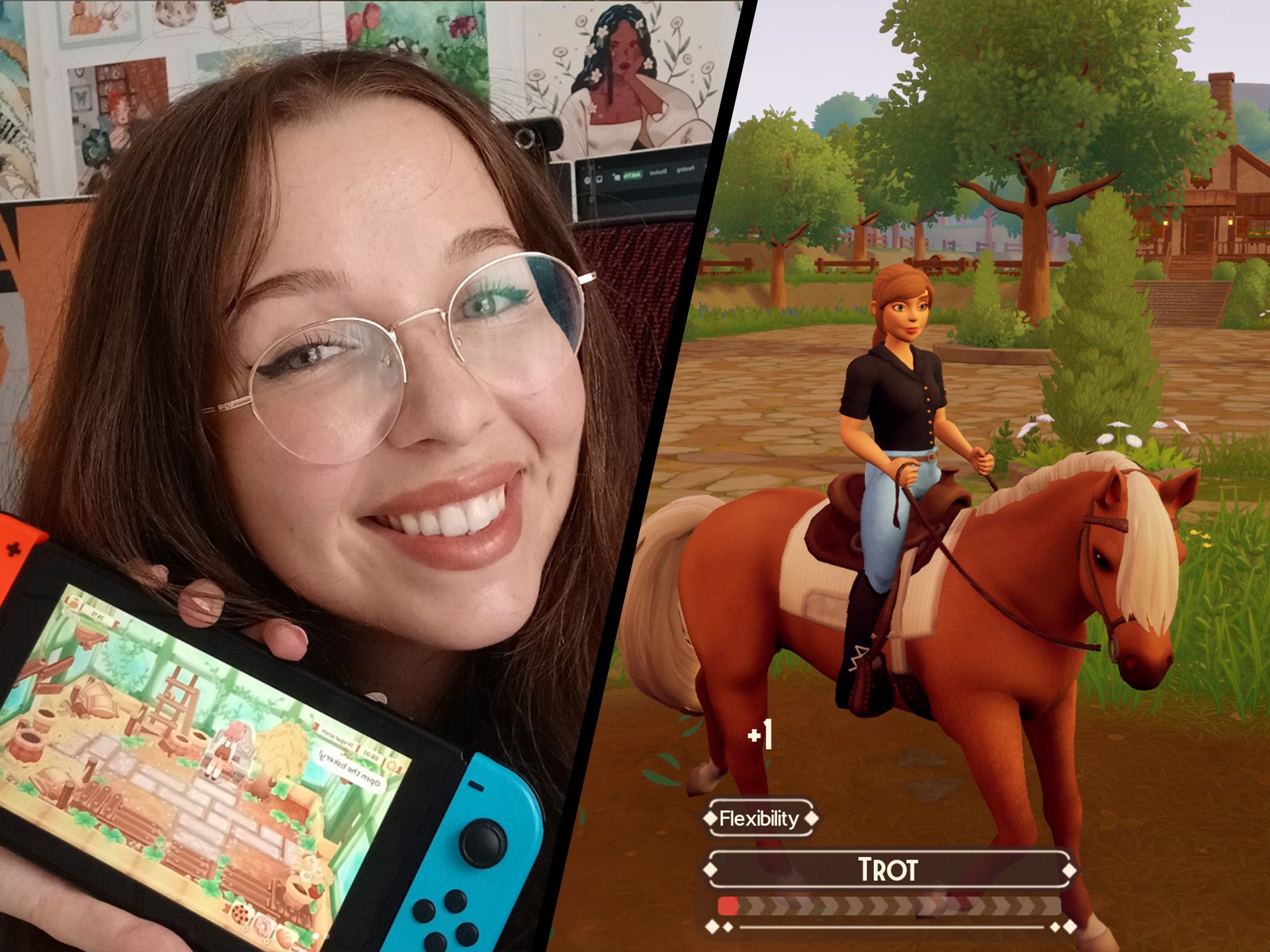




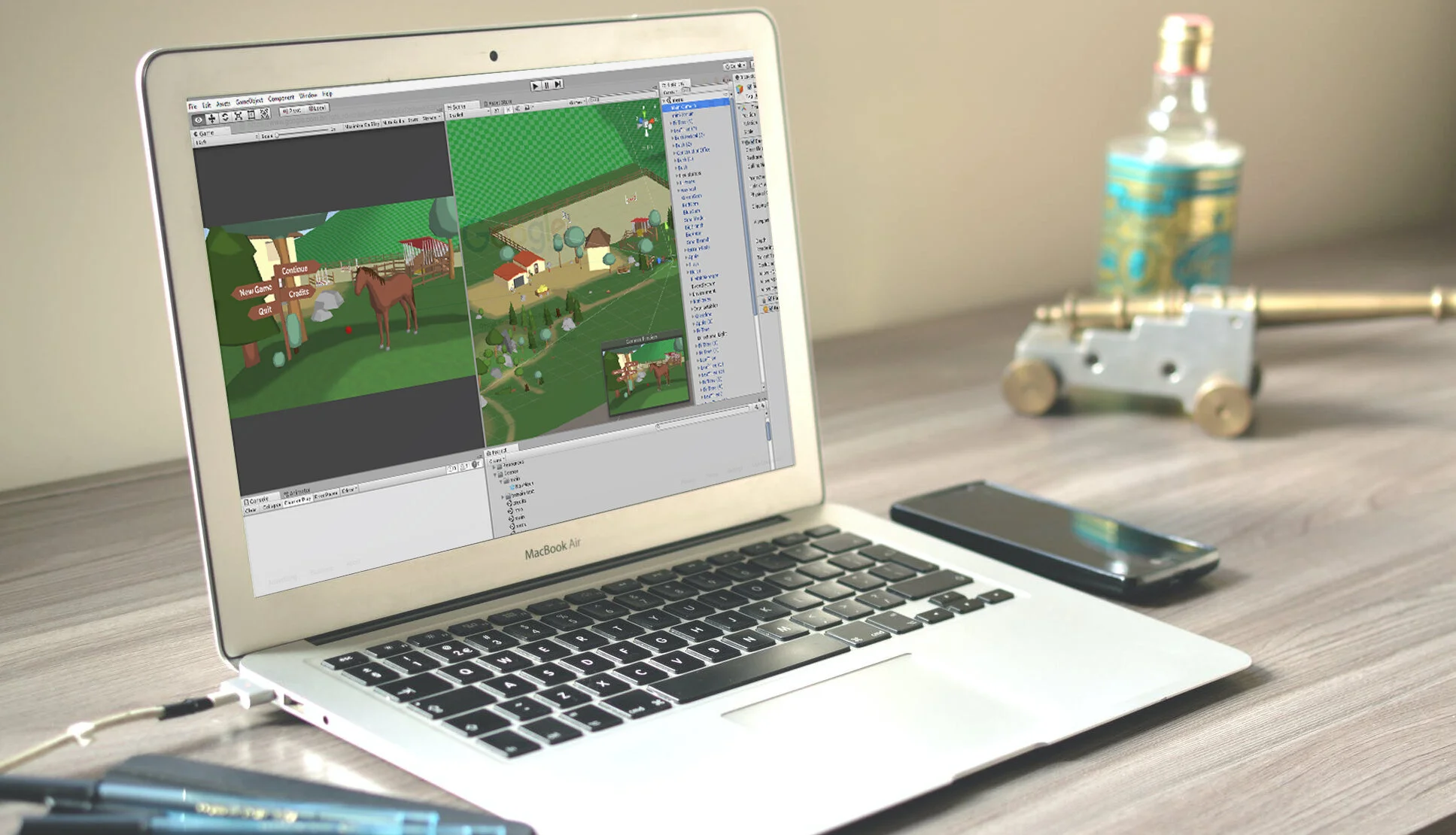
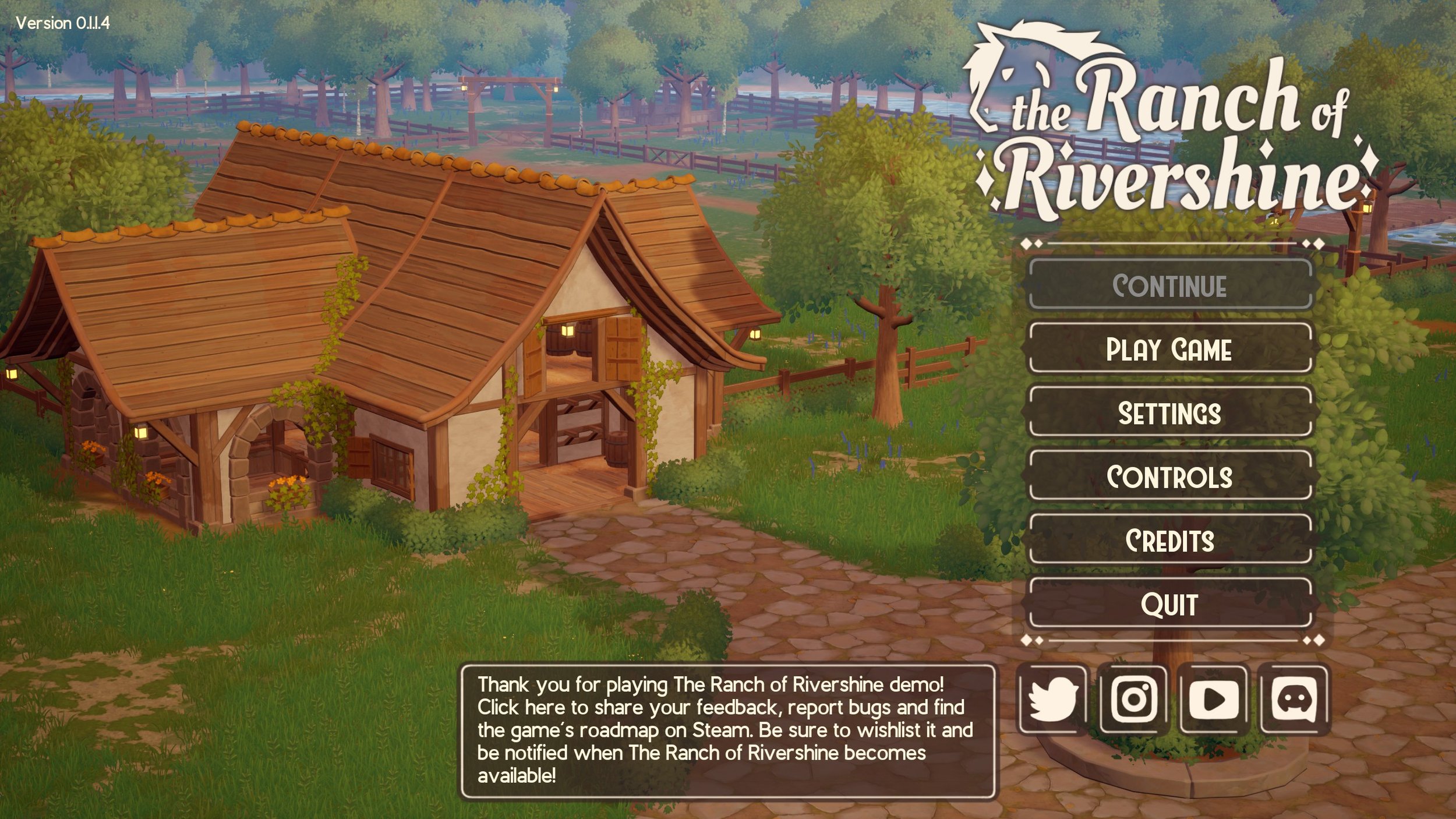


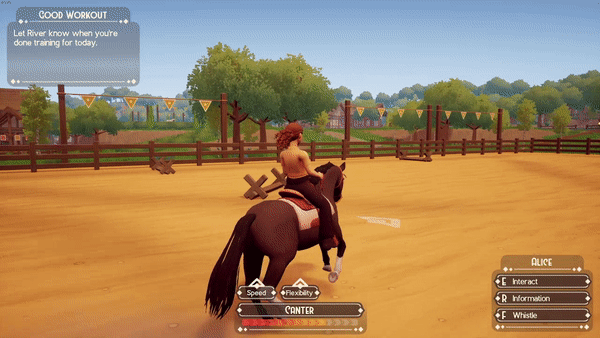




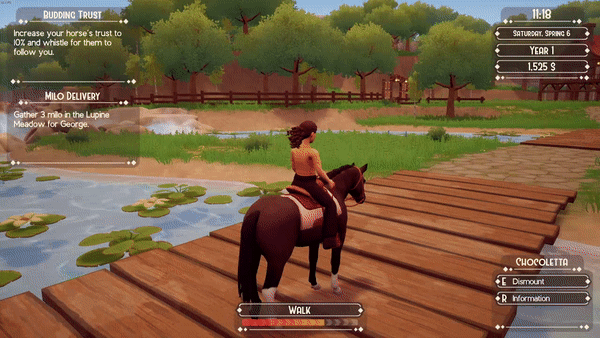



I have written about The Ranch of Rivershine on this site on various occasions over the years, but what’s been missing is an actual review of the game. The time for that has definitely come, so let’s dive into my actual play experience with the most successful indie horse game on Steam.